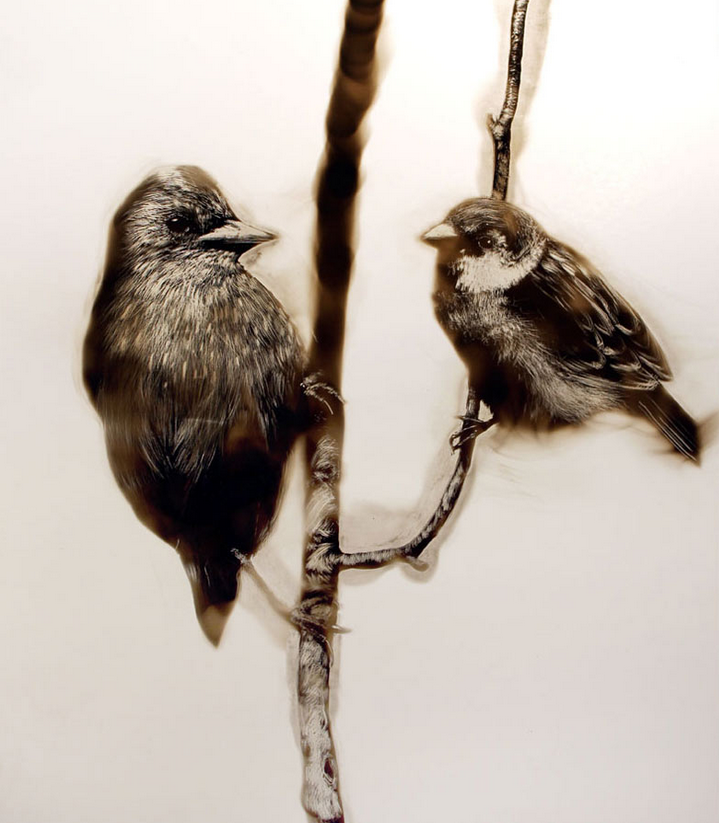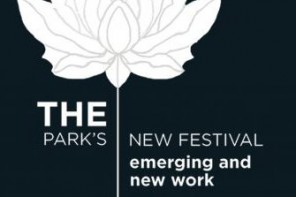Fire consumes, warms, and illuminates, but is also symbolic of pain and death. On some days heralding inspiration, while on the others a predominant symbol of hell, fire is the only one of the four elements that humans can produce themselves, and hence it acts as a bridge, connecting the mortals and gods. Rituals often involve an eternal flame, and kindling a fire is equated with birth and resurrection. Fire can also be viewed as a force of purification, spiritual enlightenment, sexuality and fertility. Many cultures view fire as a symbol of wisdom and knowledge.
In the midst of all this, a Canada-based artist Steven Spazuk channelizes the incessant power of fire to create captivating artworks. With an open flame under his belt, he burns images onto his canvas using a torch and a freewheeling hand, followed by careful etching and embellishes the ensuing soot with feathers and brushes.
IMAGE COURTESY – artchipel
He also employs stencils and a reductive process akin to etching, where he scrapes images into the soot with feathers and paint brushes. Describing his idiosyncratic technique, he says:
People always ask me this question and every time I am sort of embarrassed by it. The truth is that I dreamt of it. I was in a gallery (in my dream) and was looking at that black and white landscape and I knew that it was done with fire and completely understood the technique. In the morning when I woke up I remembered that dream and started to experiment. It was an instant love affair with the medium. That was in April of 2001 and I have been working with fire ever since.
“Sometimes working with soot is like working with chance,” he says, “The path the soot takes is as random as the path a fish takes in the water or a bird in the air. Most of the time when I am in my studio working, I don’t know what I am going to get and that is the pure joy of working with soot. I let the drawings appear without controlling anything. I put the flame to the paper [and] let a shape appear. Searching the abstract form, I wait for a figurative revelation, like when I was a child looking up at the cloud. ”

IMAGE COURTESY – demilked
The artist has also released a video of him producing his works of art. It displays the hard work and dexterity that goes into transforming the soot marks into familiar objects.
Spazuk spent the past 15 years perfecting his fire-painting technique, experimenting with methods for singeing paper and brushes. All of this experience has given him the skills to create some outstanding art that has been displayed in galleries all over the world. Despite his obvious skill and knowledge he admits each project continues to teach him something new because the soot never acts the same more than once.

IMAGE COURTESY – slate
He has made brushes from the hair of a Barbie doll, the end of a frayed rope. He once created a portrait of his wife, for which he gathered up the hair she lost during her chemotherapy treatments for breast cancer and made them into a brush.
Spazuk has spent a great deal of time creating images that incorporate birds. He also prefers incorporating humans caught in a moment that beholds so much more than appears at the surface level. He creates mosaics leveraging multiple, unrelated projects. This includes collecting different pieces of his artwork and then putting them altogether into something entirely unique from where it started.
IMAGE COURTESY – slate
The physical appearance of Spazuk’s final work is not always planned, often he is guided by serendipity and spontaneity to see what fire will ultimately let him discover. Spontaneity and chance are the heart and soul of his creative process. Neither does he censor, nor does he direct.
He does not let his own ideas get in the way of where the painting wants to take him, instead he works with what the soot provides in order to produce the most beautiful, and natural photo. Spazuk opens himself to the experience. His creativity coupled with the fluidity of soot creates mesmerizing pieces of artwork.














